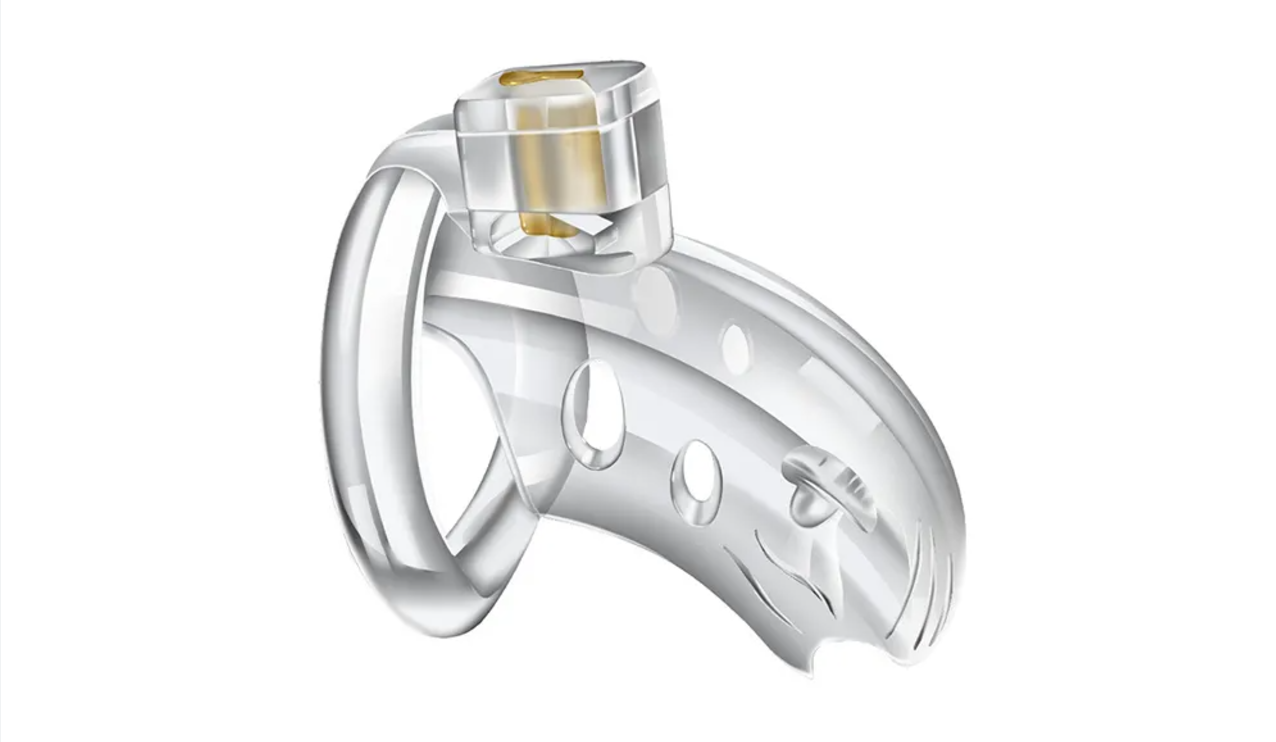The Ultimate Guide to Chastity Device Piercing: Everything You Need to Know
2025-10-23
Introduction
Chastity device piercing is a niche but growing interest within the realm of body modification and male chastity practices. For many, it represents both a physical and psychological commitment to control, trust, and restraint. This guide explains everything you need to know about chastity piercings—from their history and types to jewelry selection, fitting tips, and safety considerations.
Overview of Chastity Device Piercing
Chastity piercings are designed to secure a chastity device in place using a genital piercing—usually the Prince Albert (PA) or frenum piercing. The piercing serves as an anchor point, preventing the device from being removed without unlocking it.
Purpose and Function:
-
Prevent unauthorized device removal
-
Enhance long-term wear comfort
-
Add erotic and aesthetic appeal
-
Strengthen psychological commitment in power exchange relationships

The picture comes from the Internet
Historical Context
Body piercings have existed for centuries, but chastity device piercings evolved from both fetish and functional origins. The Prince Albert piercing, historically rumored to date back to the Victorian era, was initially considered an ornamental piece of jewelry. Later, with the rise of chastity culture in the late 20th century, it gained practical use for device anchoring.
Today, chastity piercings combine the symbolism of submission with the engineering of a secure device that fits snugly and securely.

Types of Chastity Device Piercings
Prince Albert (PA) Piercing
The Prince Albert piercing is the most common and practical type for use with chastity devices. It passes through the urethra and exits at the underside of the glans, providing a strong and comfortable point to attach a locking mechanism.
Benefits:
- Excellent alignment with most chastity cages
- Allows secure locking through a ring or curved barbell
- Quick healing (typically 4–8 weeks)
- Compatible with PA-specific chastity devices
Popular Jewelry Options:
- Curved barbells
- Captive bead rings
- Segment rings
- Circular barbells
Each option provides a balance between comfort, aesthetics, and device integration.
Frenum Chastity Piercing
The frenum piercing runs horizontally along the underside of the shaft. While less common than PA piercings for chastity, it remains a valid option for users who prefer external attachment points.
Features and Considerations:
- Easier to perform than PA piercings
- Shorter healing period (2–4 weeks)
- Works best with devices designed for frenum anchoring
- Less secure under heavy movement compared to PA piercings

Choosing the Right Piercing Jewelry
Materials and Compatibility
Selecting the right jewelry is essential for comfort and hygiene. Always choose implant-grade materials that resist corrosion and irritation.
Recommended Materials:
- Titanium (ASTM F136) — lightweight and hypoallergenic
- Surgical stainless steel (316L or 316LVM) — durable and smooth
- Niobium — ideal for sensitive skin
- Avoid cheap alloys or plated metals that can cause infections
Popular PA Piercing Jewelry Options
For chastity applications, stability and shape matter more than aesthetics. The jewelry must fit securely within the device's locking mechanism.
Best-Selling Styles:
- Curved barbells: Balance between movement flexibility and comfort.
- Captive bead rings: Ideal for secure closure and a visually appealing design.
- Segment rings: Smooth surface, perfect for long-term wear.
Safety and Hygiene Considerations
Maintaining hygiene is critical to avoid infection or injury.
Best Practices:
- Always sterilize jewelry before insertion.
- Clean the area twice daily with saline solution.
- Avoid alcohol or hydrogen peroxide (these delay healing).
- Use breathable underwear to prevent moisture buildup.
- Never insert or remove jewelry without clean hands.
If irritation, redness, or discharge occurs, remove the device and consult a professional piercer or healthcare provider.
Fitting a Chastity Device
Initial Fitting Process
Proper fitting ensures both comfort and safety. The device should align naturally with the piercing without pulling or pinching.
Steps:
- Clean both the device and the jewelry thoroughly.
- Insert jewelry first and ensure full closure.
- Attach the device ring or locking pin gently.
- Adjust the position for natural alignment with the urethra.
Adjusting the Device for Comfort
During the first few weeks, minor discomfort is normal. Make small adjustments to prevent strain.
Tips:
- Use a lubricant for smoother movement.
- Avoid tight-fitting devices during initial healing.
- Check daily for signs of swelling or abrasion.
Key Factors to Consider
- Piercing gauge: Heavier gauges (10G–8G) reduce the risk of tearing.
- Healing stage: Only use a fully healed piercing for device wear.
- Locking mechanism: Select one that is compatible with your jewelry type.
Common Issues and Solutions
| Problem | Likely Cause | Recommended Solution |
|---|---|---|
| Pain or swelling | Pressure from misalignment | Refit device and check gauge |
| Redness or irritation | Poor hygiene or allergic reaction | Clean more frequently, switch to titanium jewelry |
| Difficulty locking device | Mismatch between jewelry and device | Use a PA lock or adjustable bar |
| Migration or stretching | Wearing heavy rings for long periods | Downsize jewelry or switch to curved barbell |
Conclusion
Chastity device piercing blends art, anatomy, and discipline. Whether you choose a PA or frenum piercing, success depends on proper aftercare, material choice, and device fitting. Done correctly, it enhances both the security and emotional intensity of chastity play.
Final Thoughts on Chastity Piercings
Piercings used for chastity are more than body modifications—they're symbols of dedication and trust. Take time to heal, invest in quality jewelry, and consult professionals for fitting advice. With care and attention, a chastity device piercing can offer long-term comfort, reliability, and fulfillment.
Resources for Further Exploration
- Wikipedia: Chastity Piercing
- The Association of Professional Piercers – safepiercing.org
- "Male Chastity Device Fitting & Safety Guide" – Community Resource Hub









